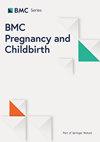建立并验证单胎孕妇自发性早产的预测模型
IF 2.8
2区 医学
Q1 OBSTETRICS & GYNECOLOGY
引用次数: 0
摘要
在本研究中,我们筛选了高敏感性和特异性的早产预测因子,旨在建立一个适合中国妇女、易于操作和推广的早产预测模型,并建立一个早产预测评分系统,以早期、直观、有效地评估早产风险。根据孕妇的分娩结果,将 685 名单胎妊娠后三个月(16-26 周)的孕妇分为早产组和非早产组。收集了两组孕妇的临床和超声信息,筛选出可能导致早产的风险因素,并使用截断值进行分析。研究人员绘制了一个提名图,以建立筛查肺结核的预测模型和评分系统。此外,符合建模队列纳入标准的 119 名孕妇被纳入模型的外部验证。模型的准确性和一致性通过接收者操作特征曲线(ROC)和 C 校正曲线下的面积进行评估。多变量逻辑回归分析表明,孕妇流产次数、妊娠第一周流产史、早产史、孕妇CL、宫颈口开放和连续开放与孕妇发生sPTB之间存在显著相关性(P<0.05)。我们根据上述六个风险因素绘制了一个提名图柱状图,得到了一个 sPTB 预测模型,并建立了一个评分系统,将早产分为低、中、高三个风险组。在对模型进行验证后,Hosmer Lemeshow 检验表明拟合度良好(p = 0.997)。建模队列 C 校正曲线接近对角线(C 指数 = 0.856),证实队列 C 校正曲线也接近对角线(C 指数 = 0.854)。建模队列和验证队列的 AUC 分别为 0.850 和 0.881。我们的预测模型符合中国国情,直观易操作,适用性广,是临床早期发现 sPTB 的辅助工具,也可用于临床管理中评估 sPTB 的低、中、高风险。本文章由计算机程序翻译,如有差异,请以英文原文为准。
Establishment and validation of a predictive model for spontaneous preterm birth in singleton pregnant women
In the current study, we screened for highly sensitive and specific predictors of premature birth, with the aim to establish an sPTB prediction model that is suitable for women in China and easy to operate and popularize, as well as to establish a sPTB prediction scoring system for early, intuitive, and effective assessment of premature birth risk. A total of 685 pregnant women with a single pregnancy during the second trimester (16–26 weeks) were divided into premature and non-premature delivery groups based on their delivery outcomes. Clinical and ultrasound information were collected for both groups, and risk factors that could lead to sPTB in pregnant women were screened and analyzed using a cut-off value. A nomogram was developed to establish a prediction model and scoring system for sPTB. In addition, 119 pregnant women who met the inclusion criteria for the modeling cohort were included in the external validation of the model. The accuracy and consistency of the model were evaluated using the area under the receiver operating characteristic (ROC) and C-calibration curves. Multivariate logistic regression analysis showed a significant correlation (P < 0.05) between the number of miscarriages in pregnant women, history of miscarriages in the first week of pregnancy, history of preterm birth, CL of pregnant women, open and continuous cervical opening, and the occurrence of sPTB in pregnant women. We drew a nomogram column chart based on the six risk factors mentioned above, obtained a predictive model for sPTB, and established a scoring system to divide premature birth into three risk groups: low, medium, and high. After validating the model, the Hosmer Lemeshow test indicated a good fit (p = 0.997). The modeling queue C calibration curve was close to diagonal (C index = 0.856), confirming that the queue C calibration curve was also close to diagonal (C index = 0.854). The AUCs of the modeling and validation queues were 0.850 and 0.881, respectively. Our predictive model is consistent with China’s national conditions, as well as being intuitive and easy to operate, with wide applicability, thus representing a helpful tool to assist with early detection of sPTB in clinical practice, as well as for clinical management in assessing low, medium, and high risks of sPTB.
求助全文
通过发布文献求助,成功后即可免费获取论文全文。
去求助
来源期刊

BMC Pregnancy and Childbirth
OBSTETRICS & GYNECOLOGY-
CiteScore
4.90
自引率
6.50%
发文量
845
审稿时长
3-8 weeks
期刊介绍:
BMC Pregnancy & Childbirth is an open access, peer-reviewed journal that considers articles on all aspects of pregnancy and childbirth. The journal welcomes submissions on the biomedical aspects of pregnancy, breastfeeding, labor, maternal health, maternity care, trends and sociological aspects of pregnancy and childbirth.
 求助内容:
求助内容: 应助结果提醒方式:
应助结果提醒方式:


